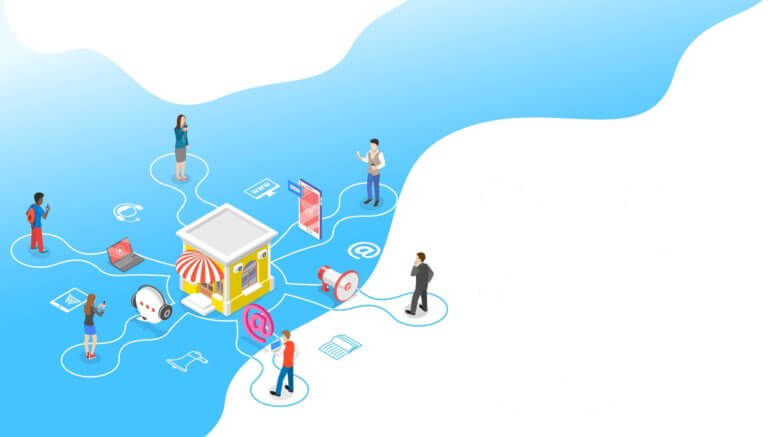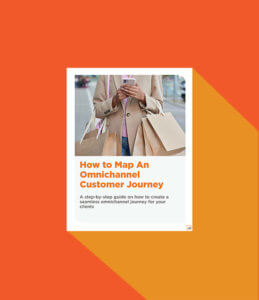As consumer shopping patterns and expectations are constantly evolving, it’s important for retailers to ensure an effective omnichannel strategy is implemented within their customer journey. To deliver an impactful service experience, organizations need to ensure that all customer touch points truly reflect their customer’s shopping habits. Not only should the customer journey consider both the digital and physical customer interactions, but also how seamlessly they transition between one another.
Although ensuring an effective omnichannel customer journey is nothing new to retailers, many are failing to effectively meet the needs of their customers. According to a report conducted by Forrester Consulting, 85% of Canadian B2C businesses lack a seamless customer journey. The report indicates that this is a result of poor planning, as well as the inability to synthesize actionable insights from customer data.
Understanding customers and their habits are the most critical yet complex thing for any organization to get right. This worksheet will provide a step-by-step guide on how to map an impactful omnichannel journey for your organization. A key to developing a successful omnichannel strategy is identifying the right customer data to map out a journey that accurately reflects your customer’s needs.

Image Source: Freepik
What is an Omnichannel Journey Map?
An omnichannel customer journey is a visual representation of a customer’s path to purchase a product or service across multiple channels, emphasizing both the physical and digital touchpoints of your brand. These maps are unique to each retailer, regardless of industry, and are rooted in consumer data to reflect the actual shopping habits of a retailer’s customer.
Omnichannel journey mapping ensures a seamless end-to-end client experience, regardless of the combination of touch points and interactions a customer uses. When a company comprehensively understands their customer and how they interact with its brand, it will become easier to harmonize the marketing and client service efforts across its interaction channels.
STEP 1: The Data Collection
In order to build the foundation of your omnichannel journey map, you should compile all of your customer data. Compiling user data not only allows you to map out their experience accurately but also provides insight into who they are.
Many organizations utilize third-party omnichannel insights platforms to help centralize accurate customer data. You should leverage quantitative data from your Customer Data Platform (CDP) or Content Management System (CMS), as well as any qualitative data from interviews, surveys, or documented feedback.
STEP 2: The Objectives
Before you start building your omnichannel journey map, you must outline the objective of your service delivery. Start by establishing the metrics your business is looking to improve, as well as the end goal of your consumer’s path to purchase.
Setting these in stone at the beginning is integral, as these objectives will provide the foundation for your omnichannel journey map.
STEP 3: The Persona(s)
Who is the customer you are targeting? Further defining your target user, their needs, goals, and motivations will help you map out a journey that will make a lasting impression. Leverage the existing customer data collected from step 2 to narrow down a targeted group of customers you are trying to reach.
At this stage, it will be beneficial to identify more than just one user group. You will eventually map out multiple journeys for various user groups as each has different ways of interacting with your business. For example, younger target demographics may begin their customer journey online through social media, versus older generations who may begin their customer journey through e-mail marketing or physical advertisements.
STEP 4: The Behavioral Stages
Now that the scope and personas have been established, the next step is identifying the key stages in your omnichannel customer journey.
The number of stages in a customer journey will be dependent on your persona’s needs. How many steps do they need to take to achieve their goal? This will provide an overview of how your customer journey will be mapped as well as how they will transition between both physical and digital channels.

Image Source: Freepik
A simple way to do this is through affinity mapping, a straightforward brainstorming tool used to organize complex data into groups and subgroups. You would start by writing out all the steps your user will need to take in order to achieve their goal on sticky notes in any order.
After this, stages are determined by grouping together the actions that relate to one another and categorizing them under overarching subheadings. For example, the beginning stages of your customer’s journey could be categorized under “Research” or “Discovery”. Don’t forget to reference the customer data compiled along with your customer profile to ensure your business and customer goals are aligned.
STEP 5: The Touch Points
Now that the outline of your user journey has been set up, it’s time to map out the touch points of your customer’s journey. Leverage the existing touch points you brainstormed under each stage during the affinity mapping, feel free to add on any additional customer interactions you may have missed.
Consider the seamless and not-so-seamless transition your customer experiences as they move between physical and digital channels to reach their goal. Are the customer interactions at each touchpoint positive, negative, or neutral? How does their experience vary throughout your service? Be realistic with your target user and reference your persona’s goals and motivations to understand how they might experience your journey.
STEP 6: The Future-proofing
A common pain point amongst retailers is that they are unable to adapt their services to meet the changing habits of their consumers. In order for your customer journey map to stay up to date and consistently reflect the needs of your customer, you will need to be consistently reevaluating your customer journey on a regular basis.
Key indicators of a journey that doesn’t meet your customer needs anymore are a dip in key performance metrics, decreasing Net Promoter Scores, a decline in foot traffic, etc. Pay close attention to how your customers are interacting with your business and make changes to how you deliver your customer experience.

Image Source: Freepik
As businesses grow and consumer shopping habits evolve, so does the challenge to deliver an efficient cross-functional collaboration between customer touch points. It’s important to continuously analyze and adapt customer journeys to meet the expectations of your targeted users. This will allow businesses to stay relevant to their market and stay ahead of the competition.
Our downloadable Omnichannel Guide helps put you on the right path to developing your very own Omnichannel Customer Journey. Download your free guide below!



